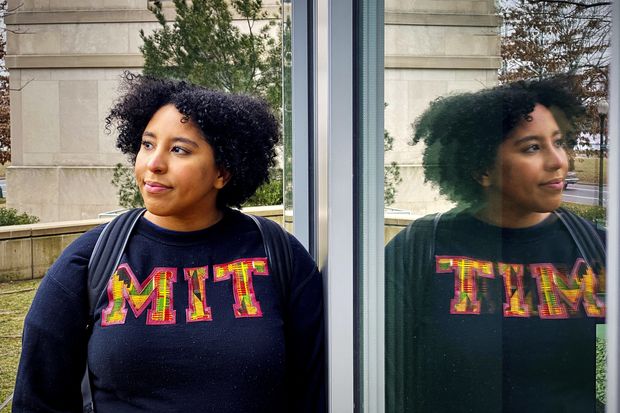For the more than 42 million borrowers with federal student loans, the Covid-19 pandemic brought unexpected relief: a break from payments. The pause on interest accumulation alone has saved borrowers roughly $4.8 billion a month, according to the Education Department.
Last March the department put most federal student-loan payments on hold and set interest rates to zero. One year and three stimulus bills later, the Biden administration extended the payment suspension and interest waiver until Sept. 30.
As a result, close to 20 million borrowers currently have their loans in forbearance, according to Mark Kantrowitz, author of “How to Appeal for More College Financial Aid.”
‘Mentally, it eased up the pressure,’ says Kim Stolow on the suspension of student-loan payments.
For Kim Stolow, a 41-year-old clinical therapist living in New Jersey, the pause came as she was struggling to handle reduced work and more child-care commitments.
“Mentally, it eased up the pressure,” she said. “Just one less thing to think about.”
As of December 2019, the median student-debt borrower was 34 years old, according to the Federal Reserve Bank of New York. Last year, the average disbursement of federal student-loan debt for graduate and undergraduate students was $11,077, according to the Education Department.
Total outstanding student debt stood at $1.56 trillion in the fourth quarter of 2020, up $9 billion from the prior quarter.
For some young Americans, the rising costs of higher education has heightened their debt loads and disrupted their financial lives. The student-loan payment and interest freeze has offered them the ability to make ends meet, pay down debt and take care of other responsibilities. Some have used the money to build up their savings.
There are hints of where this extra cash has gone, and where it hasn’t. An increase in credit scores suggests more young people are paying down other debt.

Krystal McCain realized last year that she was paying more toward her student loan than for rent.
Paying the bills
Krystal McCain, 29, found that both of her jobs—working as an activities coordinator at a university and waitressing on the side—were affected by the pandemic. In 2020, she realized she was paying more toward her student loan than she did for her apartment’s rent.
With her university job on furlough and her waitressing hours reduced, Ms. McCain said if it hadn’t been for the suspension of loan payments she wouldn’t have been able to take care of basic responsibilities.
”The beginning of the lockdown was really rough,” she said. “If this all hadn’t been paused, I don’t know what I would have done. I would’ve been evicted. I don’t know how I could have paid the bills.”
Ms. McCain said the pause on loans allowed her to pay off more than $1,000 in credit-card debt. But in August 2020 she celebrated what felt to her to be an even more important milestone: opening her first-ever savings account.
“I feel both extremely embarrassed and incredibly proud,” she said. “I work in higher education, and I have a master’s degree, but I was still just getting by.”
New York Fed researchers said there is a possible link between more people paying down high-interest debt and the student-loan pause. The credit-reporting company Experian said average credit-card debt held by millennials dropped 11%.

Jarrod Grim has diverted the amount of his suspended student-loan payment to savings.
Building up savings
When Jarrod Grim, 35, made his last student-loan payment on March 17, 2020, he immediately made a plan: As long as the pause was in effect, he would divert the amount of his student-loan payment, $525, to a separate savings account.
Now, a year later, he has kept up with the plan.
“In the past 11 months, I’ve added about $5,800 to my savings account,” he said. “By the end of September, I estimate I’ll have just shy of $10,000 in savings.”
Initially Mr. Grim made the move to boost his emergency savings, preparing in case he lost his job.
Mr. Grim has $80,000 in student-loan debt, all federal loans and all accumulated from his graduate degree in urban planning at Rutgers University. He consolidated 11 different student loans and hopes to pay off one with the highest interest rate.
Joy Liu, a financial coach at the Financial Gym, a financial-services company, is encouraging clients to embrace Mr. Grim’s strategy: continue earmarking the money for the student loans in their budget even if it isn’t going to the loans at this time.
“What we really try to do is we never want them to get out of practice of paying them,” she said. The money, she said, can be used for saving, bills or investments—or paying off student loans after the pause.

Chandler Perry said she is thinking about taking out federal loans for the coming school year, in part to help pay off existing loans.
An uncertain future
Not all borrowers have benefited from the break in loan payments. While 89% of student-loan borrowers have been helped by the payment freeze, the remainder of those who are left out are borrowers with private loans.
Chandler Perry, 27, a Massachusetts Institute of Technology graduate student, said uncertainty has been a big factor in her decision-making over the past year, especially as she watched peers benefit from the pause. Even with a large scholarship, Ms. Perry has amassed more than $120,000 in private student loans, which continue to accrue interest.
Ms. Perry, who identifies as Black, described the student-debt crisis as “another roadblock for minorities.”
While 20% of residents of majority-Black neighborhoods have outstanding student loans, which is higher than for neighborhoods with majorities of white or Hispanic residents, the New York Fed found that increased cash flow from the pause in loan payments was smallest among borrowers residing in Black communities.
She is now considering taking out federal loans for the coming school year, in part to help pay off her existing loans.
“It’s counterintuitive,” said Ms. Perry. “I’m paying back my loans with my loan money.” She is hoping for more transparency from Congress in terms of the time length of the freeze and what to expect in terms of forgiveness.
Wait and see
Ms. Liu, the financial coach, has had to convince some people that it is OK to not pay back loans at this time. For those who can manage, the break offers a rare opportunity to be strategic and catch up on other financial goals.
“There’s something about the American student-loan system that is really triggering,” she said. “So people hold a lot of resentment toward their student loans and want to get them off their back. Maybe this is helping some move past the mental block that they couldn’t have children or get married until their student loans were paid.”
Oftentimes, emergencies mean people have no choice but to handle pressing expenses before preparing for bigger money milestones, said Mr. Kantrowitz said, the author of the financial-aid book.
“People shouldn’t feel guilty,” he said. “If you need that money to pay for groceries or handle medical expenses or pay other debt, do it. You often have no choice but to do it.”
—Allison Prang contributed to this article.
Write to Amber Burton at Amber.Burton@wsj.com and Julia Carpenter at Julia.Carpenter@wsj.com
Copyright ©2020 Dow Jones & Company, Inc. All Rights Reserved. 87990cbe856818d5eddac44c7b1cdeb8






